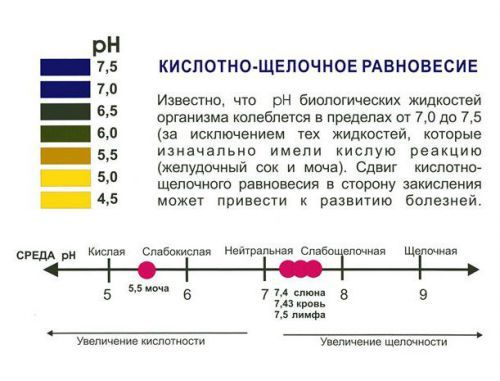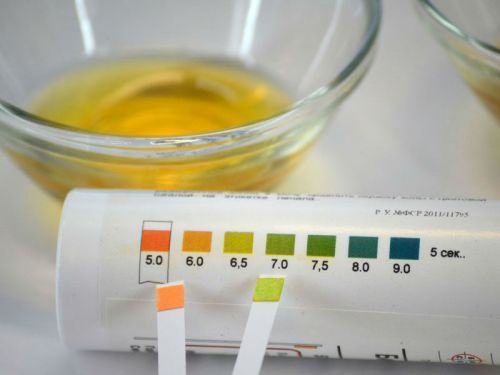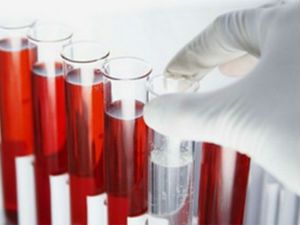In the urine of a healthy person, there are always components that define not only its composition, but also biochemical properties, which can be seen on the body. urine pH (acidity) is a measure of the content of hydrogen ions in urine because of them evaluated its acid-alkaline balance, plays an important role for the diagnosis of several pathological conditions.
The pH of urine is quite variable, because it can influence different factors such as the age of the patient, the nature of his power, the level of physical activity, amount of drinks per day of fluid and others.
Estimation of acidity of urine is a mandatory step in any primary diagnosis of the patient, along with the definition of the content of erythrocytes, leukocytes, protein and other components.
What is the acidity of the urine?
It is important to understand that in medicine, the term “acidity of urine” and “urine pH” are synonymous, that is are one and the same. This figure reflects the activity of hydrogen ions in the urine, and in place with this acid-alkaline balance of the body, the glomerular apparatus of the kidneys, etc.

The urinary sediment is formed by processes of filtration and reabsorption that occur in both kidneys. Second they “chased” through the blood, filtering it and removing all the toxic metabolic products formed as a result of biochemical reactions transformation of proteins, carbohydrates, fats, etc.
Hydrogen ions are formed by dissolution of inorganic substances (salts, acids and others), and they determine the reaction of the urine in humans (as evaluated by their activity in biological fluids).
The reaction of the acidity of the blood due to the concentration of hydrogen ions in it
Rate
As mentioned above, the normal pH of urine depends on many physiological factors such as age, weight, diet of the patient and at which time sampling of the analysis (morning or evening).
In an adult the normal urine acidity should not exceed the range of not less than 5 but not above 7. The average level of acidity in the morning 6,0-6,4. In the evening average pH of 6.4 and 7.0. Such data indicate that the human body works normally.
In children, these figures differ from those in adults. For a child who is breast-feeding, the norm is not more of 6.9, no less than 7,8. If the kid is on artificial feeding type, the reaction of the urine should correspond to the following values of 5.4 and 6.9.
During pregnancy, changes in pH are observed more often, because a woman’s body undergoes major changes not only in physiological terms but also on the hormonal and physical and biochemical level. This means that fluctuations in pH during gestation rather typical, however normal the acidity is considered to be in the range of 5.3 to 6.5.
How dangerous deviation acidity of urine from the norm?
When the urine for a long time there has been a shift of pH in the acidic or alkaline side, then there is a risk of stone formation. The stones can be of different nature, it depends on what kind of reaction observed in the urinary sediment of the patient.

Any change in the acidity in one direction or another is always in need of correction
The following types of stones:
- oxalate stones (they are formed from the salts of oxalic acid in the acid-alkaline the urine, the reaction of which is equal to 5-6);
- urate stones (formed from uric acid, the reaction below 5);
- phosphate rocks (formed from phosphate-containing compounds in alkaline environment, pH exceeding 7).
As a rule, acidity is diagnosed in patients not only in urine but also in blood tests.
It faces a number of serious complications, such as:
- violation of the metabolic processes that lead to the slowdown of biochemical reactions and accumulate in the patient’s body of toxic metabolic products and toxins;
- activation and proliferation of infectious agents (representatives of pathogenic and conditionally pathogenic microflora) that can cause prolonged inflammation in the kidneys or bladder;
- the viscosity of blood towards increased thrombus formation, and aggravation of cardiovascular diseases, etc.
Possible changes in urine
One is called alkaline urine, which increases pH (more than 7). Acidic urine, on the contrary, is characterized by low pH (less than 5).
The reasons for the increase of acidity of the urinary sediment (“acidification”)
To increase the acidity of the urinary sediment can the following factors:
- eating behavior, eating foods that contain a lot of protein or fat (e.g., cottage cheese and other dairy products high fat content, sausage products, semi-finished products, eggs, etc.);
- prolonged fasting, the lack of carbohydrate food, this starts the breakdown of fat and protein body reserves (to ensure the necessary energy); intensive physical activity and sport, leading to dehydration of the body and remain in a constant state of overload;
- finding people in hot climatic conditions, in stuffy rooms or work in hot shops;
- inflammatory processes in the organs of the urinary system, caused by Mycobacterium tuberculosis or Escherichia coli (pyelonephritis, cystitis, renal tuberculosis, etc.);
- General septic condition of the body (severe intoxication);
- uncontrolled (elevated) blood sugar with diabetes;
- long-term use of alcoholic beverages and their surrogates;
- taking medications that increase the normal acidity (e.g., ascorbic acid, calcium chloride, etc.);
- pathological processes in the gastrointestinal tract (e.g., fistulous course from the pancreas);
- prolonged or profuse diarrhea and others.

High-protein food is a common cause of “acidification” of urine
Reasons for the decrease in acidity of urine (“alkalization”)
To lower the pH of urine can the following factors:
- eating protein exclusively of plant origin;
- a large amount of drinks per day, alkaline mineral water;
- insufficient intake of chloride ions or excess loss during severe vomiting (including the patient lost fluid);
- violation of the thyroid gland (hyperthyroidism) or adrenal (hypoaldosteronism);
- high level of gastric acidity (hyperacidity gastritis);
- active replication of infectious agents to the walls of urinary organs (with the exception of pathological processes caused by Escherichia coli or Mycobacterium tuberculosis);
- chronic renal failure and others.
Daily consumption of water with alkaline mineral makeup is becoming the cause of its alkalinity (we are talking about patients with initially neutral acidity of urine)
Methods for determination of acidity of urine
There are several methods through which you can determine the pH of the urinary sediment. They are used both in the laboratory and at home that allows the patient to independently control the reaction of the urine (this is especially useful for patients with diabetes, oxaluria, uraturia, etc.).
The most common are the following studies.
The use of litmus paper, which is impregnated with a special reagent is able to react and change its color.

At the same time dipped into the urine two strips of blue and red, on the basis of changing their color, to judge the acidity of the urine:
- if both indicators do not change color, it is neutral;
- if both indicators have changed color, they say about the reaction of the amphoteric type (presence in urine of compounds acidic and alkaline reactions);
- if the red indicator turned blue, it indicates alkaline;
- if the blue indicator is red, it indicates an acid reaction of urine.
Unfortunately, the use of litmus paper does not assess the quantitative values of acidity, but only the fact of presence or absence of the acid-base shift in one direction or another
The method of Magarshak (allows to estimate the approximate pH value). To use a special solution (methylene blue and neutral red), which is added to the sample urine.

Next is the assessment of the staining of the urinary sediment:
- if the urine turns bright purple, it is close to the pH of 6.2;
- if the urine becomes light purple, closer to a pH of 6.6;
- if the urine becomes gray, pH close to 7.2;
- if the urine turns green, it is close to or exceeds a pH of 7.8.
Test strips are the most simple and reliable method of determining the acidity of urine mujcin and women of different ages and in children. These strips are widely used in most laboratories and institutions, medical-preventive type.
They can be purchased at the pharmacy, so there is the possibility of daily control of the pH of the urinary sediment in the home.
The use of strips does not require any special skills, you only need to lower them indicator part in freshly collected urine sample.
To change the color of the indicator to assess not only the reaction of the urine, but also approximate values of the pH (you need to use a colour scale shown on one side of the tube with the test strips)
To normalize the acidity of the urine is necessary for timely diagnosis and treatment of those conditions that formed the basis of the shift reaction in the acid or alkaline side.
Each patient requires skilled medical care, so you should not postpone your visit to a specialist. After all, the doctor will be able not only to establish the cause acid-base imbalance, but also to appoint adequate therapy, and thus reduce the risk of possible complications or completely prevent them.




Hi!
Love the septic content on your site! You know, websites get traffic from their blog, and we feel that you could use a little help, since you are not blogging weekly yet.
Writing takes a lot of time, and we have just the team to come up with great content you are looking for.
You can have a brand new article to post on your website starting at $10 in as little as 5 days!
Thanks for your time, Enjoy the rest of your day.